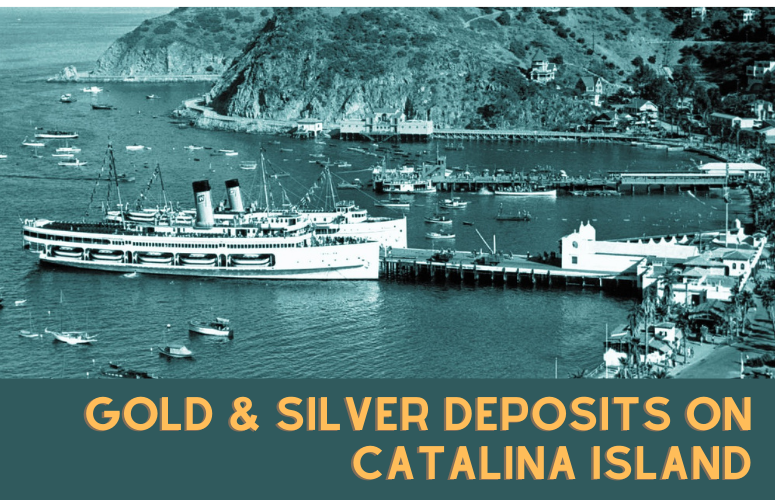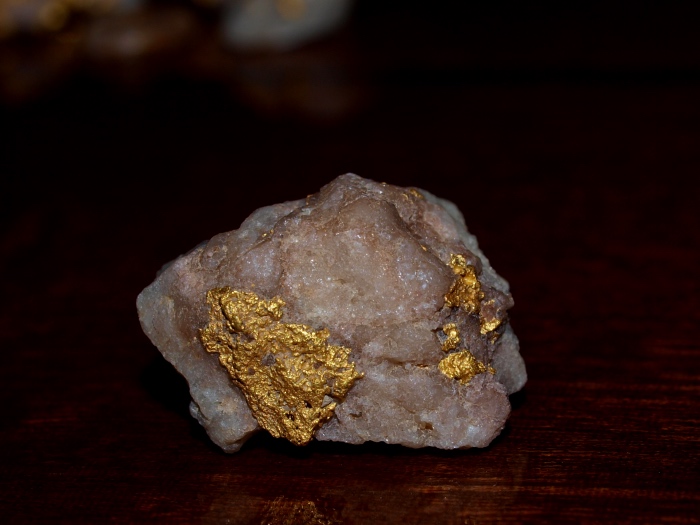
Catalina Island, a rocky land mass off the coast of Southern California, was home to a short-lived gold rush in the 1860s, long after the famous California Gold Rush. However, its mining history precedes this rush by thousands of years.
Early history
Inhabited by the Pimugnans (a native California tribe) as early as 7000 BC, the island was well known along the California coast as a source of soapstone which was used in vessels and cooking implements.
The island has changed ownership numerous times since being discovered by the Portuguese explorer Juan Rodríguez Cabrillo, who claimed the island for Spain in 1542. At one point it was owned by Mexico before Governor Pio Pico made a grant to Thomas M. Robbins in 1864. It was then sold to several private citizens until 1919 when it ended up with William Wrigley, Jr.
Its mining history dates back centuries ago with early settlements and excavations recorded in present-day Avalon, the Isthmus, Emerald Bay and Shark Harbor.
Also Read: Gold in the Mojave Desert
And: The Future of Deep Sea Mining
The Catalina Gold Rush
When George C. Yount discovered gold-bearing quartz in the hills of Cherry Valley in 1832, he didn’t give it much thought. The North Carolina native was in Catalina hunting otter and only returned when the California gold rush was well underway. Unfortunately for Yount, his three trips between 1832 and 1855, did not yield much. He died in 1865 before he could reestablish the exact location of his original find.
Suddenly in 1863 there was renewed interest in Catalina when information about the potential of Yount’s discovery began to circulate. Daniel E. Way and Martin M. Kimberly were the first persons to file a claim in April 1863, describing their “Monmouth Claim” as a gold and silver-bearing rock at the Isthmus. More claims followed rapidly on the eastern end of the island, in the Fourth of July Valley, Cherry Valley and Mineral Hill.
In the meantime, Yount’s associate Samuel Prentiss had informed a friend, Stephen Bouchette of the hidden treasure. Bouchette in turn registered a claim and secured more than $10,000 in funding for excavation works.

The financial backing to Bouchette’s exploration fueled rumors of extensive gold deposits on Catalina Island. As more discoveries of silver and lead continued, hundreds of miners descended on the island and small mining towns popped out among the hills and valleys. Dozens of lots were staked out across the island and a plan was put forward for a mining city at Wilson Harbor. Although the city never materialized, the stage was set for a mining boom on Catalina Island.
The most interesting part of Catalina’s gold rush is that it fizzled as quickly as it had started. In 1864, as the American civil war raged, concerns grew that the island, with its abundance of silver and lead could be used by Confederate sympathizers to outfit privateers. The Union Army issued an ultimatum through Captain B.R. West of the 4th California Infantry requiring everyone to leave the island.
The order essentially ended the hunt for gold although a few miners (mostly for silver and lead) and ranchers with well established operations were allowed to stay while the Union troops put up a base at the Isthmus.
Bouchette on the other hand loaded up a sailboat and disappeared before he laid his hands on the elusive nuggets.
Mining Operations on the Island
The large mining operations on Santa Catalina Island from 1863 and more actively in the 1920s were mainly for lead, silver, and zinc. In fact, most of the silver, lead and zinc produced in Los Angeles County was mined on the island with the Black Jack Mine being the largest producer.
The most significant mines were:
Mining, Ranching & Tourism
Before Catalina Island was transformed into a sprawling tourist destination by chewing gum magnate William Wrigley, Jr., mining and ranching were the main activities. Wrigley opened numerous mines which produced silver, lead and zinc in the 1920s while ranching (sheep and cattle) survived into the 1950s when it increasingly became unprofitable.
While tourism and quarrying are the island’s main economic activities today, furniture making and pottery were part of the landscape in the first half of the 1900s. Little or no gold was ever found or commercially mined on the island. Speculation abounds that the mining claims on Catalina were largely driven by the prospect of securing financial backing from investors rather than having real indications of gold deposits on the island.
And so the promise of gold nuggets buried in the ground across Catalina that beckoned those early miners remains a mystery, and continues to fascinate today’s adventurers.
